The pianocktail is a piano that mixes drinks based on the combination of keys played. Each key corresponds to a different spirit or liquor and cocktails are produced appropriate to the mood of the song played so that the concerto can be internalized and the music can be drank in addition to being heard. It is an absurd creation, an object imagined by Boris Vian in his novel “L’ecume des Jours”.
Boris Vian was a writer, critic, actor, musician, translator, inventor, engineer, philosopher and lover of Dixieland. Enthralled with Duke Ellington and America, on the St Germain-de-Prés jazz scene Boris Vian was a jazz zazou.
“Zazous danced away the heartache despite national wartime dance prohibitions, had no politics—like mods, disco-nauts, zootsuiters or beer punks—and no credo other than devotion to jazz and their “right” to a good life. Vian touted everything the establishment regarded as frivolous and decadent: mid-WWII, Vian and some friends established a chess club and an aeronautics club dedicated to flying bizarre and cosmic kites in a St. Cloud park.” (from the New Yorker: http://www.newyorker.com/archive/2006/12/25/061225crbo_books1)
“L’ecume des Jours” is Vian’s creation: an apocalyptic, sci-fi love story infused with the melody of the blues…even the rhythm of the book flows like music, alternating between long and short sentences. Passages of the book are made up of paragraphs of octosyllables, heptasyllables and pentasyllables. Duke Ellington permeates the novel, colors change in an instant and rooms swell and round to take on the shape of songs. It is synesthesia – the novel is a musical experience, a gay composition that quickly turns tragic.
The burlesque strangeness of the book lies also in its play on words and word inventions. Following a pataphysics tradition Vian makes a parody of language and his creations rest on “the truth of contradiction and exceptions” . Alfred Jarry said that in pataphysics, every event in the universe is accepted as an extraordinary event, “the laws which govern exceptions and will explain the universe supplementary to this one”. So the imagined object of the pianococktail, so central to the book, resides in an universe parallel to ours, where anything is possible.
In a fantastic reality where music and liquor are in harmony with mood, the pianocktail exists as a rejection of the crude realism of surface appearances. It conveys a capricious indulgence and a merging of luxuries. It has no purpose but pleasure and mystery and defamiliarization, as it embraces the imaginative strangeness and beauty that resides beneath the surface of ordinary life.

In the beginning of the novel, the piano is a symbol of the decadent lifestyle of our leisurely anti-hero Colin. When Colin meets Chloe, the beautiful love interest, living manifestation of the Duke Ellington song Chloe of the Swamp, everything changes. L’ecume des Jours follows the simple plot of “Love Story” where a man loves a woman, she gets sick and she dies. But behind this simple plot is a coming of age story…a descent from a boogie-woogie into the blues, where our main character Colin matures and slowly sheds his naviete like a snakeskin…Colin who had never had to work a day in his life suddenly runs straight into the everyday, for his love of Chloe he is forced to toil away and sell his belongings in order to save money to keep her alive. When the piano is sold in the end, the atmosphere is dense with the melancholy bitterness of the blues:
“Do you know any Duke Ellington?…” said Colin
“Yes,” said the junctiquitarian. “I’ll play Blues of the Vagabond.”
(…) He had a very sensitive touch and the notes flew up, as airborne as the pearls cast from Barney Bigard’s clarinet in Duke’s version of the tune. Colin sat on the floor to listen, with his back against the pianocktail, and soft paisley-shaped tears slowly came from his eyes, ran down his clothes and trickled away into the dust. The music passed through him and came out distilled. The result sounded more like Chloe than the Blues of the Vagabond. The antique dealer hummed an accompaniment of pastoral simplicity and swung his head to one side like a rattlesnake. He came to the end of his three choruses and stopped. Colin, filled with contentment to the very bottom of his soul, sat still. It was like the days before Chloe was ill.
“What do you do now?” asked the junctiquitarian…
Colin got up and opened the front panel by turning the handle. They took the two glasses that were filled to the brim with shimmering liquid rainbows. The junctiquarian drank first, licking his lips with his tongue.
“It’s got exactly the taste of the blues,” he said. “And exactly the taste of those blues I’ve just played. This invention of yours is super!”…
How does the invention work? As it is described in the book:
“For each note there’s a corresponding drink – either a wine, spirit, liqueur or fruit juice. The loud pedal puts in egg flip and the soft pedal adds ice. For soda you play a cadenza in F sharp. The quantities depend on how long a note is held – you get the sixteenth of a measure for a hemidemisemiquaver; a whole measure for a black note; and four measures for a semibreve. When you play a slow tune, then tone comes into control to prevent the amounts growing too large and the drink getting too big for a cocktail – but the alcoholic content remains unchanged. And, depending on the length of the tune, you can, if you like, vary the measures used, reducing them, say, to a hundredth in order to get a drink taking advantage of all the harmonics, by means of an adjustment on the side.”
Boris Vian dreamed up the pianocktail in the 1940’s but to this day only one other person has aspired to make it. After 20 years of musical study at the University of Geneva, Géraldine Schenkel, built a mechanical version of the pianocktail with propellers, bike chains and pieces of an old gramophone for good measure. The result is a miraculous hodge-podge and while it functions it is clumsy and cumbrous. The novel describes the pianocktail as controlled by electrical contacts and relays and so we imagine creating the piano as a physical computing experiment, controlled by microprocessors and sensors.
How we intend to create the piano, in differentiation to Schenkel, is to fabricate a seamless automated creation with switches underneath each key. 32 sensors will be used to detect the music being played. Specific combinations of keys will trigger a release of alcohol, juice or garnish into a glass. In theory, the right combinations of keys can produce a specific cocktail. The mixing is possible by using a series of miltiplexors and an arduino microcontroller for the logic, electric motors and electronic valve control. The multiplexors are used to detect the sensors on the keys, which then pass information to an arduino microcontroller. The arduino microcontroller then analyses the input and uses another series of miltiplexors to control specific valves that release the contents of the respective bottles.
As the bottles hang upside down above the head of the piano, clear tubes connect to the keys and a clear plexiglass allows you to peer into the inner workings of the piano.
There is a great history of art with pianos; installation work and manipulation of piano parts. In the 1910’s and 1920’s there was a movement towards synthesizing media and creating work to transgress limitations and to combine the expressive potential of the individual components. A particular example is the “Piano Optophonique” of the Russian futurist Vladimir Baranoff-Rossiné which worked with rotating painted glass plates in complementation to the music.
Deconstructing pianos and the art of prepared pianos developed with John Cage and the growth of experimental music.
The video artist Nam June Paik did an installation with a piano and multi-channel videos. As an homage to John Cage a computer program plays Cage’s music on the piano while the composer’s image appears in the four central monitors at the top. Like Boris Vian Nam June Paik was a polymath, having studied philosophy, aesthetics, art history, painting and music. An accomplished pianist in his own right Nam June Paik combined his interests in music, art and electronics to create “something new – the moving painting, with sound.”
There is also something about the nature of the piano, so grand in size and seemingly monumental, that artists have chosen it predominantly among other musical instruments, to manipulate, alter, synthesize with other mediums and otherwise destroy. The piano was one of the major status symbols amongst the 19th Century middle class. As a stately piece of home furnishing the historian Jacques Barzun said “the piano has become an institution even more characteristic than the bath-tub.” Walter Benjamin said the piano is “a piece of furniture that functions in the petit-bourgeois interior as the true dynamic of all the dominant miseries and catastrophes of the household.” As a symbol of European musical culture, and cultural imperialism, nothing is more bourgeois than a piano, and to take this to the extreme nothing is even more bourgeois than a piano that also mixes cocktails. The pianocktail expands the possibility of what one can do with a piano and illustrates that as far as the imagination goes, the possibilities are unlimited.

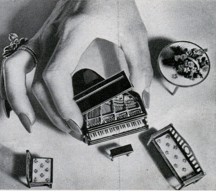
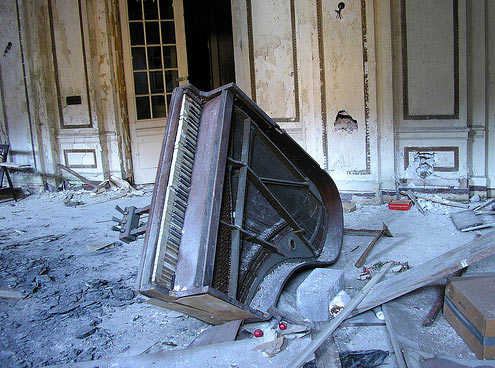



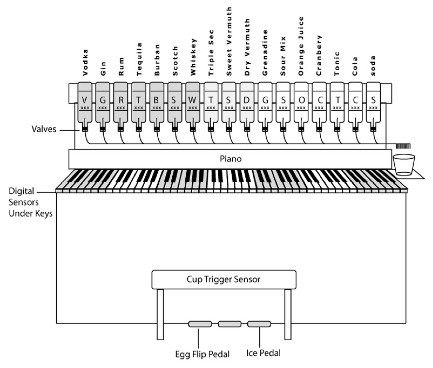

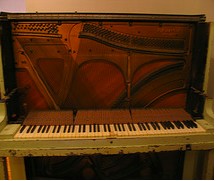


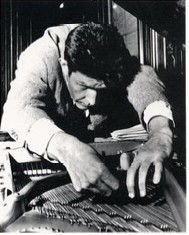

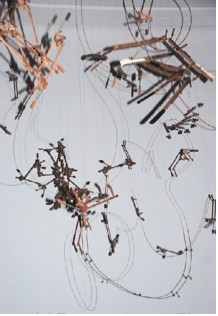

love that novel, can’t wait to see a real pianocktail that works!
Pingback: Links for 12.27.08: Pianocktail maker, 2008 = fail, Springsteen’s Wal-mart embrace… « the listenerd
The idea actually pre-dates Boris Vian by several decades. The same idea turns up in J.K. Huysman’s 19th century decadent novel
A Rebours ( translated as Against the Grain or Against Nature ) which contains other fanciful creations such as a live tortoise with a jewel-encrusted shell, and the old “walls made of aquariums” idea. A free e-text version of the book can be seen at the project Gutenberg website.
It bears saying that the idea of a keyboard-that-makes-cocktails actually comes from an 1880’s French pop novel “Against the Grain”, in which the hero assigns instruments to various spirits, and plays the apparatus like an organ.
This novel was required reading for a certain set from the 1890’s up till the Second World War — there’s no question that this is an adaptation.
Pingback: Web Zen: booze zen |
Another pianocktail in action.
:>
Pingback: * antenna-flog » Blog Archive » Pianocktail